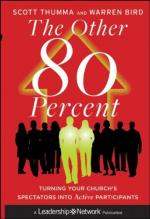|
This section contains 6,623 words (approx. 23 pages at 300 words per page) |

|
SOURCE: “Modifying a Whole Landscape: False Humour, Good Nature, and Satire in the Spectator,” in Thalia: Studies in Literary Humor, Vol. 2, No. 1, Spring 1980, pp. 3-10.
In the essay that follows, Berry examines how satire was used and developed in the Spectator, primarily by Joseph Addison. The critic asserts that Addison felt that legitimate satire must be good-natured, based in morality, and used “for the Benefit of Mankind.”
A satiric portrait by Pope or Swift is like a thunderclap; the Addisonian method is more like the slow operations of ordinary nature, loosening stones, blunding outlines, modifying a whole landscape with “silent overgrowings” so that the change can never quite be reversed again. Whatever his intentions, his reasonableness and amiability (both cheerful “habits” of the mind) are stronger in the end than the Tory spleen. To rail is the sad privilege of the loser.
C. S. Lewis1
Although he relied...
|
This section contains 6,623 words (approx. 23 pages at 300 words per page) |

|


